Resources
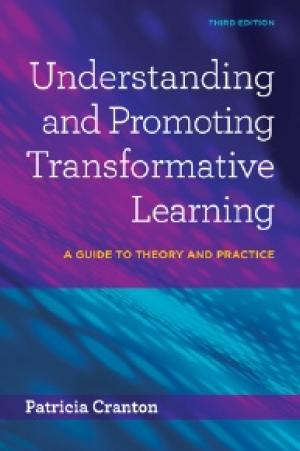
Click Here for Book Review Abstract: The third edition of Patricia Cranton’s Understanding and Promoting Transformative Learning brings a wealth of new insight from the tremendous growth in the field during the decade since the previous edition. As in the previous editions, the book helps adult educators understand what transformative learning is, distinguish it from other forms of learning, and foster it in their practice. The first part of the book is dedicated to clarifying transformative learning theory and relating it to other theoretical frameworks. The author examines transformative learning from the learner’s perspective, and discusses individual differences in how learners go through the process. In the second half of the book, the focus is squarely on strategies for promoting transformative learning in a wide variety of adult and higher education contexts. Practitioners will be able to take ideas from the text and apply them directly in their teaching. Since 1975, transformative learning has become a core theoretical perspective in adult and higher education, and research has proliferated. In the past decade, adult education and especially transformative learning grew into a noticeably larger field. The numbers of undergraduate and graduate programs in adult education have increased and continue to increase as more and more individuals are seeking the expertise, skills, and training necessary to work with adult learners in higher education, business, industry, government, health professions, non-profit organizations, and community development. In addition, the number of programs in higher education (both undergraduate and graduate) that include courses in transformative learning has grown dramatically. These academic audiences use the book to further their understanding of transformative learning theory and practice. Drawing on the latest research as well as the author’s own teaching experience in both online and face-to-face courses, this new edition will be a vital resource for members of the transformative learning community, as well as those encountering the topic for the first time. (From the Publisher)
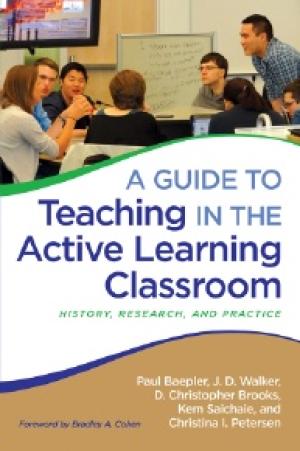
Click Here for Book Review Abstract: While Active Learning Classrooms, or ALCs, offer rich new environments for learning, they present many new challenges to faculty because, among other things, they eliminate the room’s central focal point and disrupt the conventional seating plan to which faculty and students have become accustomed. The importance of learning how to use these classrooms well and to capitalize on their special features is paramount. The potential they represent can be realized only when they facilitate improved learning outcomes and engage students in the learning process in a manner different from traditional classrooms and lecture halls. This book provides an introduction to ALCs, briefly covering their history and then synthesizing the research on these spaces to provide faculty with empirically based, practical guidance on how to use these unfamiliar spaces effectively. Among the questions this book addresses are: • How can instructors mitigate the apparent lack of a central focal point in the space? • What types of learning activities work well in the ALCs and take advantage of the affordances of the room? • How can teachers address familiar classroom-management challenges in these unfamiliar spaces? • If assessment and rapid feedback are critical in active learning, how do they work in a room filled with circular tables and no central focus point? • How do instructors balance group learning with the needs of the larger class? • How can students be held accountable when many will necessarily have their backs facing the instructor? • How can instructors evaluate the effectiveness of their teaching in these spaces? This book is intended for faculty preparing to teach in or already working in this new classroom environment; for administrators planning to create ALCs or experimenting with provisionally designed rooms; and for faculty developers helping teachers transition to using these new spaces. (From the Publisher)
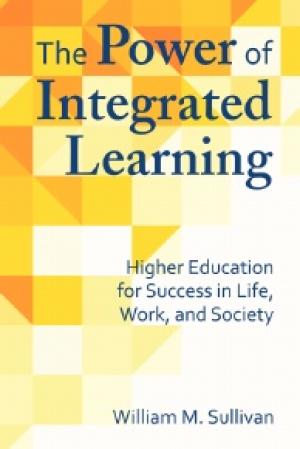
Click Here for Book Review Students and their parents wonder if college is worth the investment. Employers want graduates with the skills they need. The public wonders if higher education is preparing future generations for an era of dynamic change. In his latest book, William Sullivan offers a model of higher education that answers all these questions in the affirmative, through the power of integrated learning. Drawing on examples from the 25 members of the New American Colleges & Universities (NAC&U) consortium, the book makes the case for an approach that combines the strengths of the liberal arts, professional studies, and civic responsibility in order to give students the combination of skills and experience that will prepare them for success in all aspects of life after graduation. NAC&U campuses place emphasis upon enabling their students to know themselves and their abilities, as well as providing them with opportunities to develop a sophisticated understanding of the world. To achieve these goals, the academic programs focus on developing students’ intellectual and practical skills, such as analytical ability, problem solving, facility in written and spoken communication, and an appreciation for human diversity and creativity. These have traditionally been identified as the goals of a liberal arts education, and are the same ones identified in a national employer survey as giving job-seekers an edge. These institutions also invest a great deal of effort to provide their students with state-of-the-art preparation for professional life and occupational success in diverse fields. These range from the technical – science and technology fields, with disciplines such as engineering and computer science – through business, and across the human service fields, such as education, nursing, pre-medicine, and pre-law, to architecture, and the performing and visual arts. In these courses of study, students begin to shape their future careers. The important third value of a NAC&U education is fostering civic responsibility among students. In programs of study abroad and a range of internship and service opportunities, these colleges support their students in shaping for themselves unique and effective ways to contribute to the larger life of their world. Parents and prospective students may appreciate the chance to learn more about these schools and what they have to offer, while those working in higher education will appreciate the chance to learn more about a model that their own institutions may be motivated to emulate. All readers will take away a picture of a truly vital part of the higher education landscape in this country. (From the Publisher)
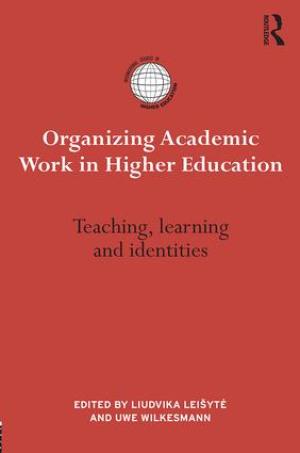
Click Here for Book Review Organizing Academic Work in Higher Education explores how managers influence teaching, learning and academic identities and how new initiatives in teaching and learning change the organizational structure of universities. By building on organizational studies and higher education studies literatures, Organizing Academic Work in Higher Education offers a unique perspective, presenting empirical evidence from different parts of the world. This edited collection provides a conceptual frame of organizational change in universities in the context of New Public Management reforms and links it to the core activities of teaching and learning. Split into four main sections: - University from the organizational perspective, - Organizing teaching, - Organizing learning and - Organizing identities, this book uses a strong international perspective to provide insights from three continents regarding the major differences in the relationships between the university as an organization and academics. It contains highly pertinent, scientifically driven case studies on the role and boundaries of managerial behaviour in universities. It supplies evidence-based knowledge on the effectiveness of management behaviour and tools to university managers and higher education policy-makers worldwide. Academics who aspire to institutionalize their successful academic practices in certain university structures will find this book of particular value. Organizing Academic Work in Higher Education will be a vital companion for academic interest in higher education management, transformation of universities, teaching, learning, academic work and identities. Bringing together the study of the organizational transformation in higher education with the study of teaching, learning and academic identity, Organizing Academic Work in Higher Education presents a unique cross-national and cross-regional comparative perspective. (From the Publisher)
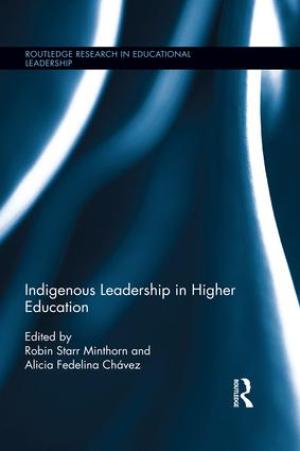
Click Here for Book Review Abstract: This volume offers new perspectives from Indigenous leaders in academic affairs, student affairs and central administration to improve colleges and universities in service to Indigenous students and professionals. It discusses and illustrates ways that leadership norms, values, assumptions and behaviors can often find their origins in cultural identities, and how such assumptions can affect the evolvement of colleges and universities in serving Indigenous Peoples. It contributes to leadership development and reflection among novice, experienced, and emerging leaders in higher education and provides key recommendations for transforming higher education. This book introduces readers to relationships between Indigenous identities and leadership in diverse educational environments and institutions and will benefit policy makers in education, student affairs professionals, scholars, faculty and students. (From the Publisher)
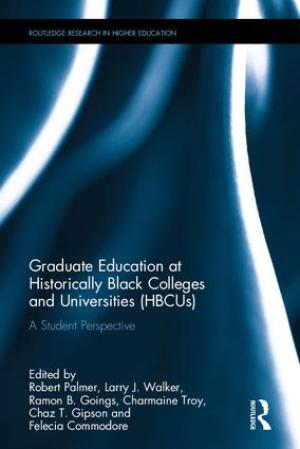
Highlighting the voices and experiences of Black graduate students at Historically Black Colleges and Universities (HBCUs), this book features the perspectives of students from a variety of academic backgrounds and institutional settings. Contributors discuss their motivation to attend an HBCU for graduate studies, their experiences, and how these helped prepare them for their career. To be prepared to serve the increasing number of Black students with access to graduate programs at HBCUs, university administrators, faculty, and staff require a better understanding of these students’ needs and how to meet them. Addressing some of today’s most urgent issues and educational challenges, this book expands the literature on HBCUs and provides insight into the role their graduate schools play in building a diverse academic and professional community. (From the Publisher)

Click Here for Book Review Abstract: What makes a good college teacher? This book provides an evidence- based answer to that question by presenting a set of "model teaching characteristics" that define what makes a good college teacher. Based on six fundamental areas of teaching competency known as Model Teaching Characteristics outlined by The Society for the Teaching of Psychology (STP), this book describes how college faculty from all disciplines and at all levels of experience can use these characteristics to evaluate, guide, and improve their teaching. Evidence based research supports the inclusion of each characteristic, each of which is illustrated through example, to help readers master the skills. Readers learn to evaluate their teaching abilities by providing guidance on what to document and how to accumulate and organize the evidence. Two introductory chapters outline the model teaching characteristics followed by six chapters, each devoted to one of the characteristics: training, instructional methods, course content, assessment, syllabus construction, and student evaluations. (From the Publisher)
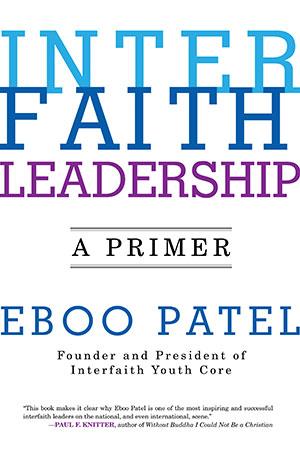
Click Here for Book Review A guide for students, groups, and organizations seeking to foster interfaith dialogue and promote understanding across religious lines In this book, renowned interfaith leader Eboo Patel offers a clear, detailed, and practical guide to interfaith leadership, illustrated with compelling examples. Patel explains what interfaith leadership is and explores the core competencies and skills of interfaith leadership, before turning to the issues interfaith leaders face and how they can prepare to solve them. Interfaith leaders seek points of connection and commonality—in their neighborhoods, schools, college campuses, companies, organizations, hospitals, and other spaces where people of different faiths interact with one another. While it can be challenging to navigate the differences and disagreements that can arise from these interactions, skilled interfaith leaders are vital if we are to have a strong, religiously diverse democracy. This primer presents readers with the philosophical underpinnings of interfaith theory and outlines the skills necessary to practice interfaith leadership today. (From the Publisher)
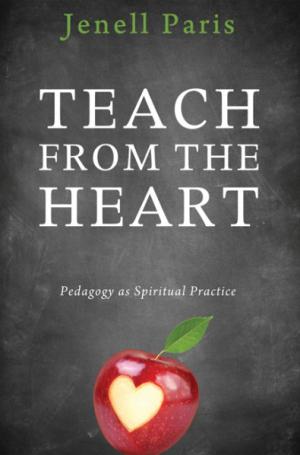
How can a teacher remain whole and happy, able to teach well for an entire semester, an entire year, and an entire career? Teach from the Heart is about finding, rediscovering, or holding on to the heart of the teaching life, which is, quite literally, the teacher's heart. It is an encouragement to take up teaching as more than a service to provide, a profession to master, or a job to perform. It is an invitation to artisanry, teaching as a craft that we master by working with our hands over long periods of time, producing results that bear the mark of their maker. Whether you're just beginning, or in it for the long haul, sit down with Teach from the Heart and deepen your heart for the teaching life. We need not bring to class the wisdom and knowledge we gained elsewhere; we can take up teaching as a spiritual practice, with the classroom as a sacred space for our own formation as persons. With nearly forty years' experience as both student and teacher, Jenell Paris's perspective is hard-won, but still lighthearted and enthusiastic. Teachers from any context will benefit: stories and examples include preschool, K-12, community education, and college teaching. (From the Publisher)

Click Here for Book Review This book has been written and organized to prepare critically reflective teachers to take their place in society and to do that with the knowledge, personal framework and tools to be successful. The reader will begin with an exploration of the role of higher education—it’s history and development—in influencing society. He will examine how being critically reflective can serve as a fundamental principle to guide our professional journey. She will start drawing the under-painting of a self-portrait of our identities to see what anchors us to our unique qualities that set us apart as individuals and will help inform our professional decisions and life-path. Out of the heightened awareness of our identities and experience we’ll initiate crafting a framework by which we think and are guided in our teaching practice. Readers will engage in exercises to flesh out this framework by unpacking our learning experiences and articulating what was previously implicit: our personal theories of teaching and learning. Readers will experiment with ways in which we become more conscious of how our thinking and feelings inform our actions and how this increased consciousness can guide us in creating powerful and compelling learning experiences for our students. We’ll look at the changing population of diverse higher education students and how we can build community with them by using our sense of identity as a bridge. Readers will learn to revise artifacts from our academic experiences to serve as benchmarks of our professional development and the major skill areas of teaching: preparing to teach, successfully executing our teaching plans in and out of the classroom to encourage deep and lasting learning in our students, effectively assessing their learning as an authentic process and how to document all these efforts throughout our careers for our own development and in preparation for when we are evaluated by others. I look forward to our collaborative journey together. (From the Publisher)